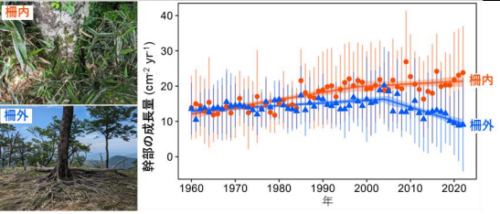2024-11-27 スイス連邦工科大学ローザンヌ校(EPFL)
<関連情報>
- https://actu.epfl.ch/news/scientists-quantify-aerosols-based-on-sea-state/
- https://www.sciencedirect.com/science/article/pii/S1352231024005193?via%3Dihub
北極海における大気エアロゾルと海況の関連性 Links between atmospheric aerosols and sea state in the Arctic Ocean
Alireza Moallemi, Alberto Alberello, Iris Thurnherr, Guangyu Li, Zamin A. Kanji, Filippo Bergamasco, Roman Pohorsky, Filippo Nelli, Alessandro Toffoli, Julia Schmale
Atmospheric Environment Available online: 26 September 2024
DOI:https://doi.org/10.1016/j.atmosenv.2024.120844
Graphical abstract

Highlights
- Sea surface state relation to coarse mode aerosol was studied over the Arctic Ocean.
- Aerosol concentration correlated stronger to sea state in unstable boundary layer.
- Wave height Reynolds number best parametrized the aerosol concentration variability.
Abstract
Sea spray emission is the largest mass flux of aerosols to the atmosphere with important impact on atmospheric radiative transfer. However, large uncertainties still exit in constraining this mass flux and its climate forcing, in particular in the Arctic, where sea ice and relatively low wind speed in summer constitute a significantly different regime compared to the global ocean. Sea state conditions and marine boundary layer stability are also critical variables, but their contribution is often overlooked. Here we present concurrent observations of sea state using a novel stereo camera system, of sea spray through coarse mode aerosols, and of meteorological variables to determine boundary layer stability in the Barents and Kara Seas during the 2021 Arctic Century Expedition. Our findings reveal that aerosol concentrations were highest over open waters, closely correlating with wave height, followed by wind speed, wave steepness, and wave age. Notably, these correlations were stronger under unstable marine boundary layer conditions, reflecting immediate sea spray generation. By analysing various combinations of sea and atmospheric variables, we identified the wave height Reynolds number as the most effective indicator of atmospheric sea spray concentration, explaining 57% of its variability in unstable conditions. Our study underscores the need to consider sea state, wind, and boundary layer conditions together to accurately estimate atmospheric sea spray concentrations in the Arctic.



